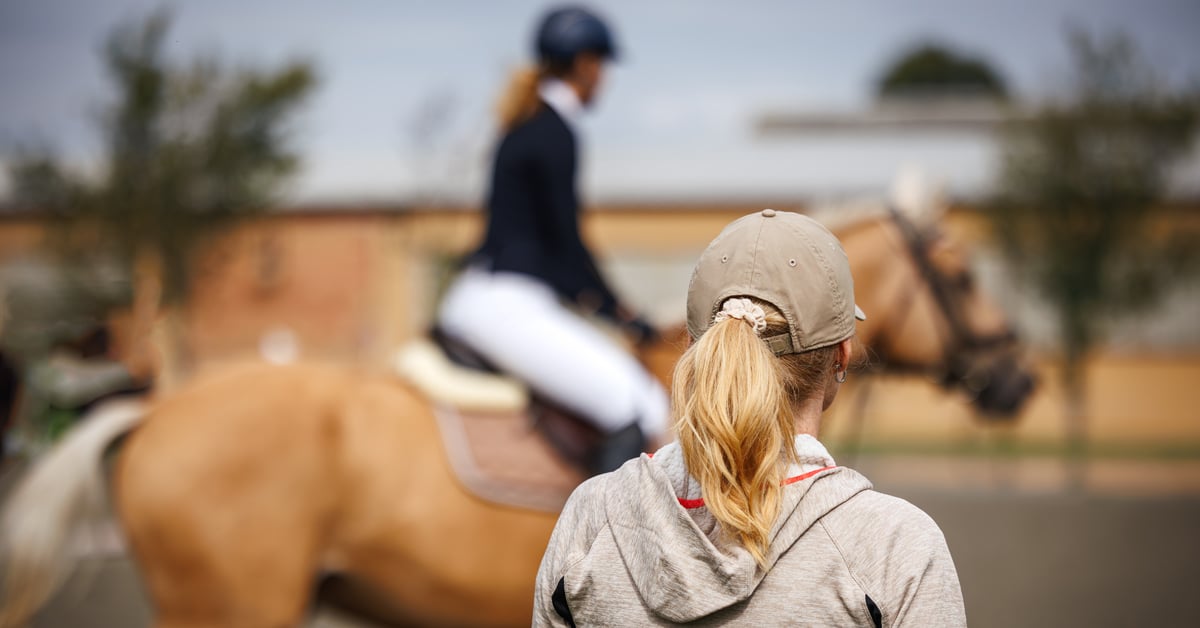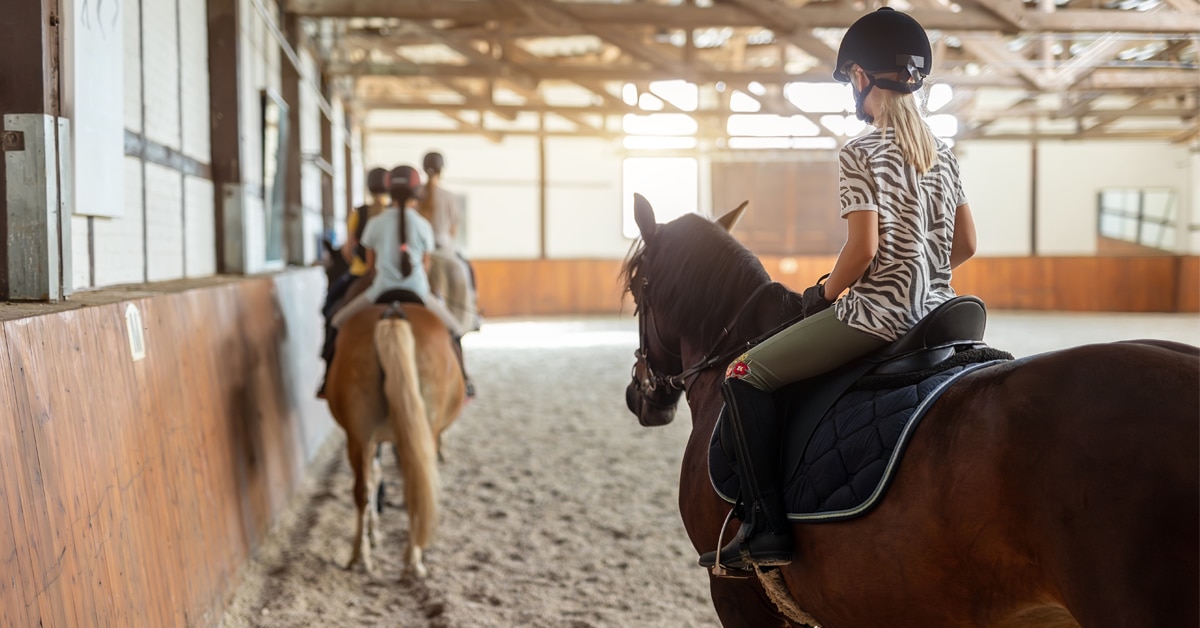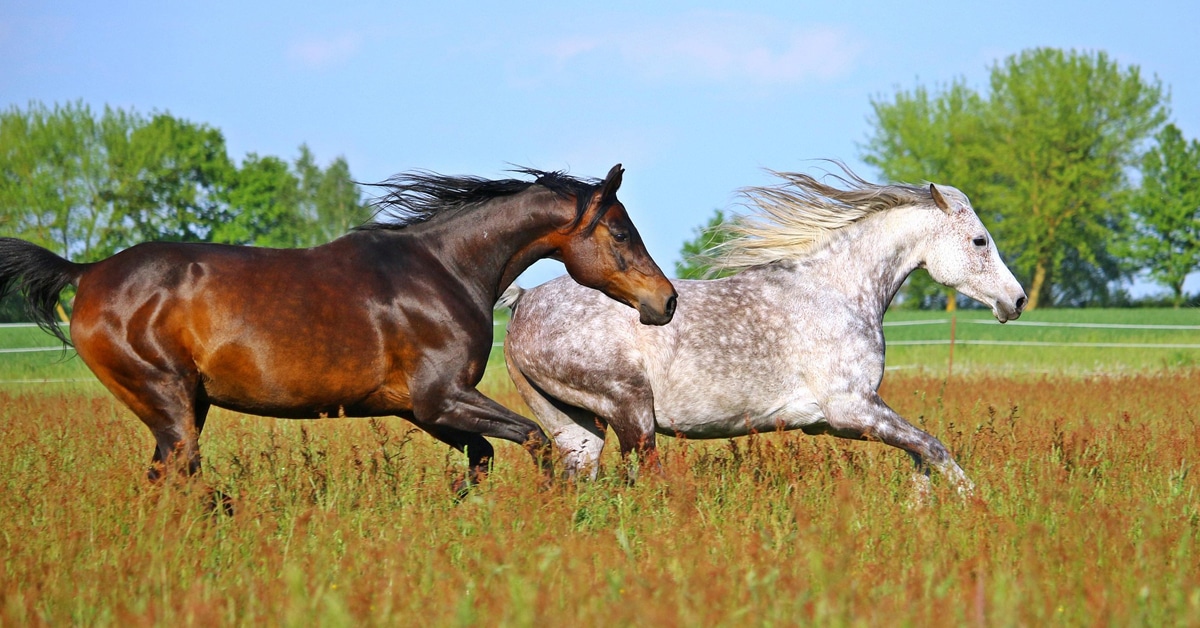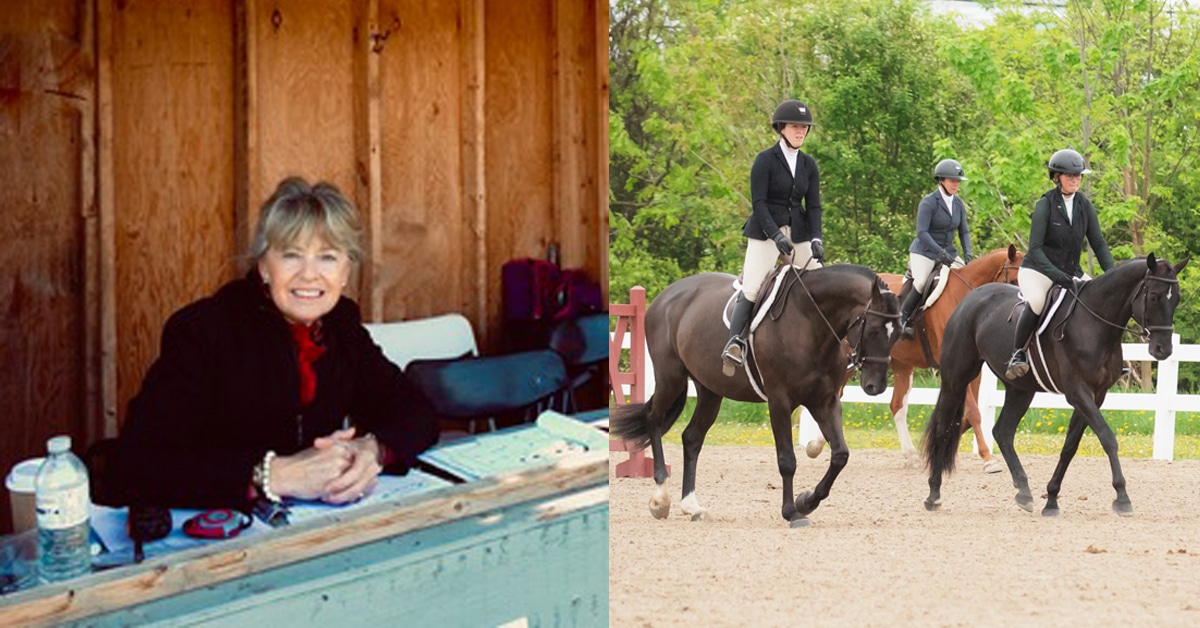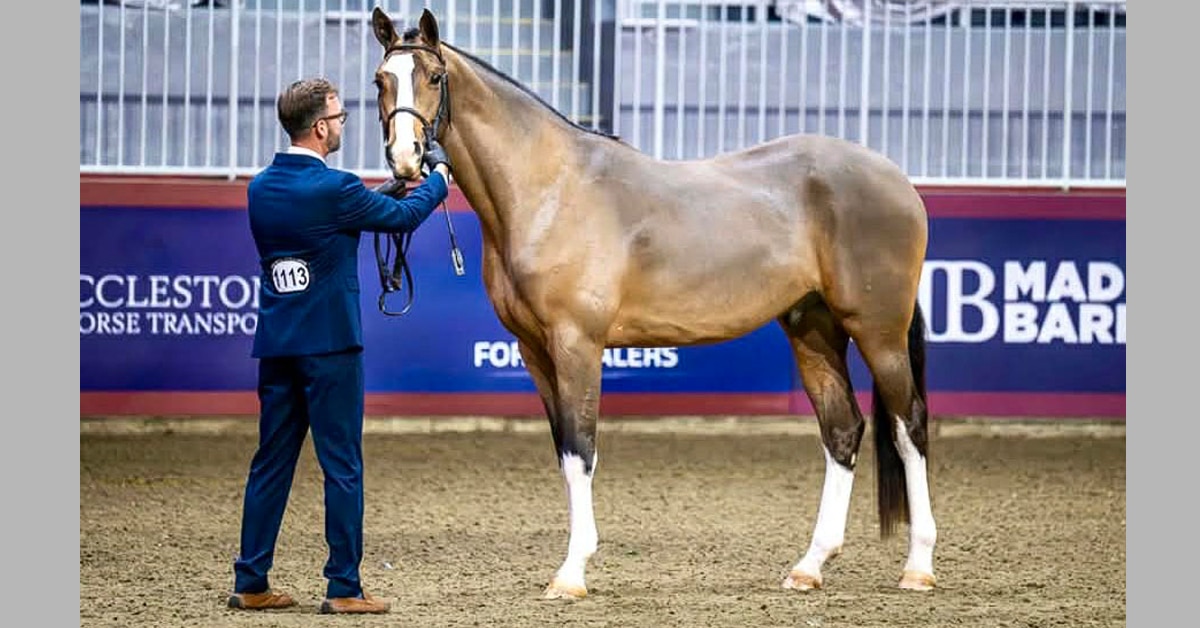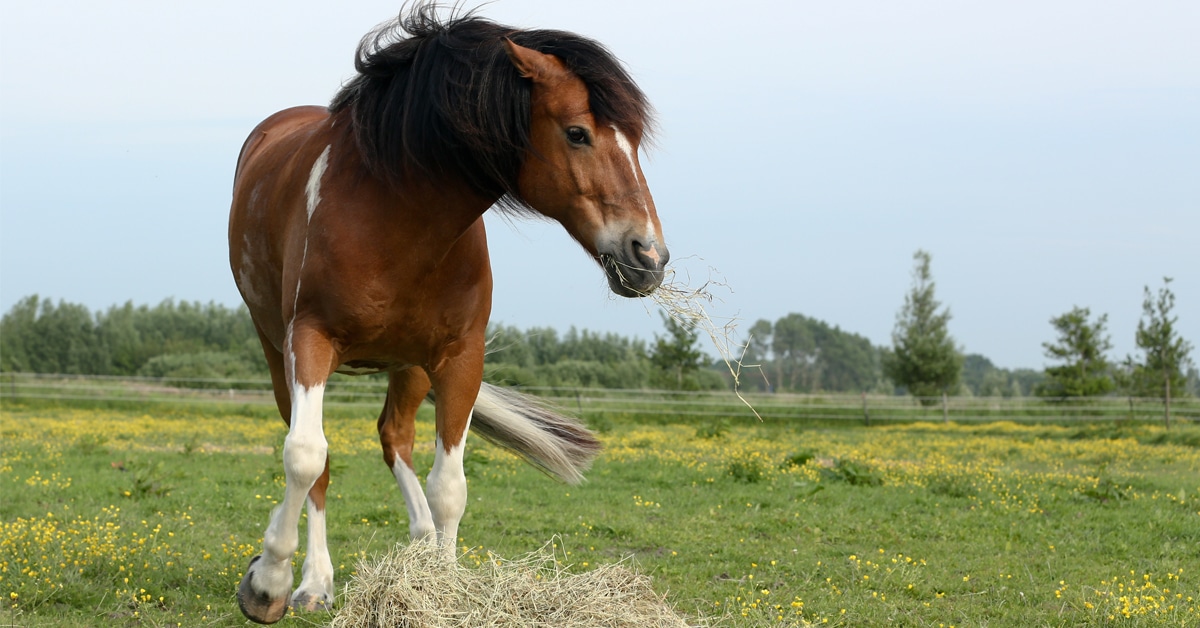By working a 60-hour week, you manage to keep your horse at a high-end full training facility. You ensure that he has the best of care, top-quality feed, individual turnout in an all-weather paddock, and house him in a beautiful 12×12 securely enclosed stall. He wears a kazillion dollar blanket with multiple interchangeable layers. He is ridden six days a week in a systematic program, and sees his farrier, veterinarian, and massage therapist on a regular basis. What more could you possibly do to make him happy?
As I discussed in last month’s article, our subjective assessments of our horses’ well-being are flawed. Horses’ subtle or non-existent behavioural cues of suffering, desensitization to the cues that do exist, and our sophisticated cognitive strategies for moral disengagement all contribute to human error when assessing equine well-being. If we really do aspire to develop the “happy equine athlete” then we need to develop and incorporate reliable measures of positive well-being, particularly in the performance arena.
As equine scientist Natalie Warren cautions, “we cannot make assumptions that our horses are happy because we are enjoying ourselves” (2015). In our daily riding and management practices there is much we can do to more accurately assess horses’ well-being and concrete strategies we can implement to enhance it.
Measure the tangibles
Physiological markers of stress, such as salivary cortisol levels, eye temperature, heart rate, heart rate variability, thermography, etc., have been used in the equine welfare literature, and provide useful objective data about how horses are coping with various management, riding, and training practices.
Equine researcher Carol Hall and her research group explored the impact of various housing conditions using physiological
markers of stress. Horses were housed in each of four different conditions for one week at a time for four consecutive weeks:
1. Singly housed with no social contact;
2. Singly housed with partial social contact;
3. Housed in pairs with full contact; and
4. Group housed with full contact.
Not surprisingly, when horses were housed in a group with full visual and tactile contact with their neighbours they showed lower physiological stress indicators (lower heart rate, eye temperature, salivary cortisol levels, etc.) than any other group. Horses adapted to this condition easily with no reported injuries, and were also easier to handle. When housed singly, they experienced the highest stress responses, and were also the most difficult to handle.
The study design (in science-speak, “repeated measures”) allows us to see a causal pattern; the same horses participated in each of the four conditions, thus indicating that the restrictive nature of the housing was the contributing factor to the horses’ increasing stress and decreasing compliance. Since sport horses are nearly always singly housed with limited or no contact with others, this research highlights the negative impact of these ubiquitous housing practices, particularly when behavioural irregularities are not present or misattributed to the horse’s bad attitude.
From the horse’s mouth: preference tests
Much agricultural animal welfare research relies on preference tests in an effort to learn what environmental choices animals make when given the opportunity (e.g. what kind of housing, bedding, social conditions, handling, etc.), and these kinds of tests have also informed equine welfare research. Von Borstel (2007) employed the preference test to examine the impact of the controversial practice of riding dressage horses in a hyperflexed neck position or “rollkur” Horses were conditioned to a Y-maze where one arm led to being ridden in hyperflexion and the alternate arm to regular collection. After this association was learned, and horses were free to make their own choice, 14 of 15 horses repeatedly chose the regular collection option. Horses also showed greater fear responses and more conflict behaviours (excessive tail swishing, open mouths, etc.) in the hyperflexion condition, supporting the notion that horses know what they want and will tell us so when given the chance.
Smart textiles for smarter training
Smart textiles, also known as intelligent or electronic textiles, are fabrics that can sense, react, and even adapt to environmental input, providing feedback about distance, speed, pressure, heart rate, heat, acceleration and more. Smart textiles that measure rein, leg, or seat pressure are already on the market and offer a wealth of objective data to riders, trainers, and potentially to judges and stewards.
Researchers from Chalmers University of Technology and Australia’s Equine Centre have created a surcingle embedded with electrocardiogram (ECG) electrodes to measure “heart rate variability” (HRV), which measures ECG patterns and can reliably distinguish psychological stress from simple exertion. Researchers Johana Ternström and Paul McGreevy are currently creating saddle girths embedded with these electrodes, which could potentially become competition criteria. They note that these metrics can play a role in monitoring sport horse welfare, particularly at the elite levels where horses are pushed to their maximum capacities.
Smart textiles also have applications for coaches who traditionally have only had the crude instrument of a horse’s behavioural response to tell them how much hand or leg pressure their students are applying. Horses faced with conflicting kick-and-pull aids may offer no behavioural response, having come to a place of “learned helplessness” where they become dull and apathetic in this inescapable aversive situation. Smart textiles provide more accurate information than what our horses might be revealing, and riders can learn to modify their aids accordingly, with the ultimate goal of applying the lightest possible aid to achieve the desired behaviour.
The rein tension device (RTD), developed by Centaur (not technically a “smart” textile, as sensors are not yet embedded within the rein itself) is one such product currently on the market. The RTD incorporates a small data logger fastened on the underside of the throatlatch with connecting wires to the two sensors that attach between the bit and the rein on each side. Data is transmitted to a laptop computer and trainers can observe the readout in real time. Measurements include average tension, least and greatest amount of tension, differences between left and right hand, and percentage of time above a manually set threshold. Trainers can use data to inform a lesson in progress, and/or save and review data later to track progress over time.
In their ongoing research, manufacturers have found that riders consistently underestimate the rein tension they use, based on feeling alone, and that rein tension unevenness (of 3 kg and more) and extreme rein tension (up to 20 kg) is not atypical. Interestingly, rein tension decreases significantly as the rider’s education with the RTD increases.
Using science to improve welfare
The International Society of Equitation Science (ISES) promotes an objective understanding of the welfare of horses through applied research and the fundamental principles of learning theory. Equine scientists and ISES founders Andrew McLean and Paul McGreevy note that trainers and owners would benefit from a clearer understanding of how learning principles such as reinforcement, punishment, habituation, and classical conditioning are used in our daily training.
These learning principles (see Horse Sport July 2014 & September 2015) are generally poorly understood by trainers (Warren-Smith & McGreevy, 2008), and horses have suffered from this lack. Although many great coaches work humanely and effectively without any knowledge of learning science, much horse training originates from a culture of a horse’s agreeable (or disagreeable) nature and their willingness (or unwillingness) to please their rider. Rather than seeing horses’ responses as neither benevolent nor malevolent, but as a response to consequences (horses, like dogs, pigeons, rats, and humans, do what works and stop doing what does not work), we believe that horses understand and share our training aspirations. We ascribe to them a much more sophisticated cognitive function than they likely possesses, and thus may also feel more justified in punishing them when they do not comply.
Equine scientists also encourage us to consider the mismatch between our expectations of our performance horses and what they were evolutionary designed to do. In fact, almost everything we demand of our horses runs completely counter to their evolutionary design. In the days when horses roamed great ranges where food was sparse and predators plentiful, those who wandered off from the group and hung around to find out if an unfamiliar object was truly dangerous were much less likely to survive and pass on their genes to future generations than those who got the hell out of Dodge with their buddies.
The fact that horses can learn to suppress their instinctive flight response and head in solo to jump enormous obstacles or dance to music in front of immense jumbotrons in packed stadiums is truly remarkable. They habitually do this so well that when they fall back on their “I’m outa here; where are my buddies?” evolutionary default, we are quick to judge them as gutless, chickenhearted, or counterfeit.
And the moral obligation?
Equine researchers Jones and McGreevy argue that in a simple cost/benefit analysis, as we increasingly compromise welfare, our justification for doing so must also increase (2010). If we compromise a rat’s physiological health to find a cure for cancer, then the cost to the rat is high but the benefit, or the justification, for doing so is also high. If a whipped race horse experiences pain when running as fast as he is physically able, so that the owner can win money and spectators are entertained, then the cost is high, but the justification is low.
As Jones and McGreevy note, the desire to win goes beyond the notions of fun or even success, since it requires that we outperform other competitors. By definition, competition requires greater and greater challenges to the horse. As these challenges increase, welfare is compromised. And, because competition requires practice, more intense, longer, harder training of increasing difficulty, we compromise welfare again (more travel, more social isolation, changing environments, changing social group, and more taxing performances).
As competitive riders, we face the unpleasant reality that we will always make greater demands on our horses than they would ever make on themselves. There is some comfort in knowing that in return we offer them a lifestyle of riches that would never be afforded to them toughing it out on the range. Yet given the choice of an hour in the dressage or jumping arena, or eating grass with their equine buddies, our horses would not choose us. Horses do extraordinary things for us, often against their inherent nature, but it is unlikely that they do so out of a competitive spirit or a desire to work in partnership toward a common goal.
You may argue that my scientific spoil-sport stance diminishes the amazing partnership that we have with our horses and underestimates their emotional and cognitive capacity. However, I contend that a less romantic lens offers us the opportunity to know our horses better, to continually discover what they need for their psychological well-being, to ensure that it happens, and to work with them in a fair, possibly happy, albeit never equitable, relationship.
The Latest
